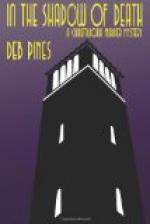to us why the photo was identified. He was
asked, ‘Is that Kritzinger?’ and he replied,
’That is Kritzinger.’ Now, a
native is very likely, in a case like that, to say,
‘That is the man.’ Then Jan Jonkers,
in re-examination, tries to get out of that.
He says that he said, ‘That is Kritzinger,’
and then the man in the office said, ‘That
is Kritzinger.’ The probability is
that Jan Louw and Jan Jonkers were asked if it was
Kritzinger’s photo, and they said, ‘Yes.’
If the Court saw the photos they could see how
much reliance could be placed on the identification.
The witnesses were taken into a room where there were
several groups of photos, but the biggest photo was
that of Kritzinger, and these natives had seen
it before. Probably it is the only photo
they have seen in their lives. It was the same
photo they had seen at Norval’s Pont.
What would one expect? One would naturally
expect them to pick out that photo, and that is what
occurred. Well, after that, one can understand
why Jan Louw identifies Kritzinger in Court.
He has had a photo shown to him in town, and
of course he naturally identifies Kritzinger at once.
The wonder is that Jan Jonkers did not identify
Kritzinger. It only shows what small reliance
can be placed on the evidence of natives, and
that is the sole evidence on which the 4th Charge is
based.
“Now let us see what Kritzinger’s story is. It is a consistent story, and it seems what probably happened under the circumstances. He crossed without prisoners, and everyone in his commando bears him out. He crossed before Wessels, and laagered there, and afterwards Wessels came up. Jan Louw says that no other commando was there when he arrived, and no other came afterwards. Jan Jonkers says there were about one hundred men when he arrived. The Court will have no doubt that there were two commandoes there. Kritzinger said that he had seventy or eighty men with him. And then again we have Jan Jonkers. If Jan Jonkers found a commando there, all the evidence goes to show that Jan Jonkers must have been with Wessels, and not with Kritzinger. Wessels captured these men, and therefore must have done the shooting.
“Then there is the question of identifying a horse. Both natives say it was a black horse, and the other evidence shows it was a chestnut horse. It may appear strange that our men remember the horses, but I would certainly trust any Boer, who has to deal with horses all his life, rather than a native. Then Kritzinger says he left the commando and went up to the kopje. Wessels had not arrived yet, and that, sir, is borne out by every one of Kritzinger’s witnesses; and, as he says, and all the witnesses say, it was in Kritzinger’s absence that Wessels arrived and the shooting was done. Kritzinger says he heard the shots and chaffed Wessels about an ox he supposed they were shooting. But whatever was done in Kritzinger’s absence was done entirely without Kritzinger’s knowledge,




